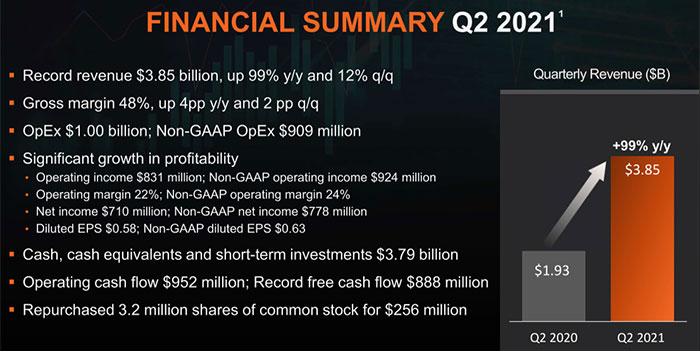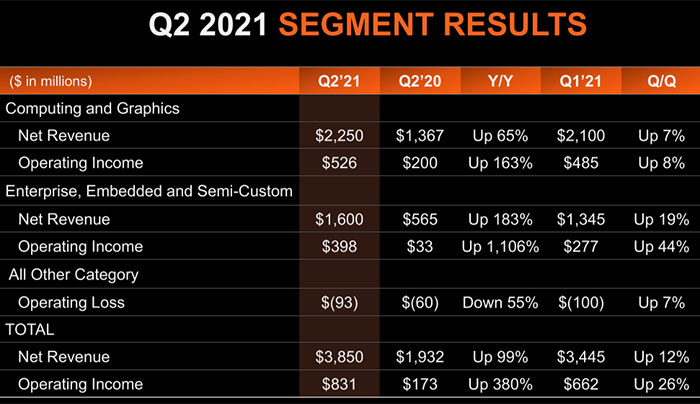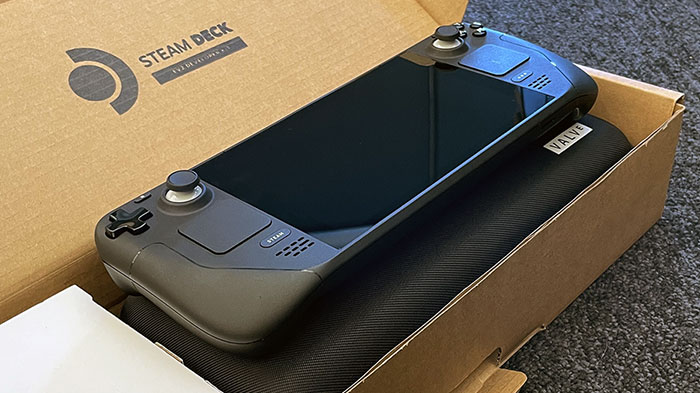AMD has just published its Q2 2021 financial results. During the most recent quarter AMD's business "performed exceptionally well," asserted the CEO, and this is backed up by the figures – record quarterly revenue of US$3.85 billion, a figure representing a 99 per cent increase year-on-year. Importantly, in a conference call after the results, Dr Lisa Su told investors that despite the general semiconductor shortage, she believed AMD would continue to grow and gain share. Su expects the severity of the shortage to subside next year.

Above, you can see AMD's financial summary slide, which highlights the very impressive quarterly revenue growth YoY. Your attention is also drawn to the 48 per cent growth in gross margin, and record free cash flow of $888 million. AMD also breaks its financials down into two business segments: Computing and Graphics; and Enterprise, Embedded and Semi-Custom. Both business segments are doing extremely well. C&G driven by sales of Ryzen and Radeon chips to systems makers and DIYers – with higher average selling prices (ASPs) than ever before, EE&SC driven by Epyc processor sales for workstations, servers and so on, and sales of semi-custom chips to console makers.

Some highlighted developments in C&G are the recent announcement of the AMD Advantage Design Framework - mixing AMD CPUs and GPUs in modern laptops. In EE&SC AMD boasted of Tesla using its processors in new Model S and Model X vehicles, and of the custom processor which will drive the Valve SteamDeck.

In a post-earnings analyst call, Dr Lisa Su fielded some questions. Su indicated that AMD still has excellent growth potential in the coming quarters, despite the widely reported overall semiconductor industry shortage. She indicated that the shortages seemed to be easing, with a better landscape visible in 2022.
For the whole of 2021 AMD is now projecting revenue growth of 60 per cent, up from 50 per cent previously. Other important things to come were firmed-up, "We remain on-track to launch next-generation products in 2022, including our Zen 4 processors built with industry-leading 5nm process technology and our RDNA 3 GPUs," said Su. Last but not least, AMD's acquisition of Xilinx remains on track, with the deal expected to close before year-end.













